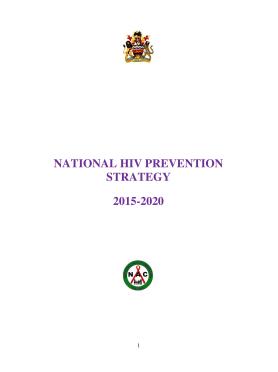Malawi National HIV Prevention Strategy 2015-2020
Malawi National HIV Prevention Strategy 2015-2020
The first case of Acquired Immune Deficiency Syndrome (AIDS) was diagnosed in Malawi in 1985. Since then HIV prevalence increased significantly and reached a peak of 16.4% in 1999 among persons aged 15-49 years Thereafter, the prevalence has been declining steadily, reaching 10.6% in 2010. In 2010 females had a higher HIV prevalence than males (12.9% vs 8.1%), with the largest disparity being in the 15-19 year old age group (3.7% in women and 0.4%). In addition, HIV was more prevalent in urban communities (17.4%) compared to rural communities (9%). The HIV estimates for 2013 depict an estimated prevalence of 10.3%. In the same year, 1,000,000 Malawians were living with HIV, 34,000 acquired new HIV infection and 48,000 died as result of HIV-related conditions. This National HIV Prevention Strategy (2015-2020) is a critical guiding tool for designing and implementing evidence-based, rights-sensitive, and targeted HIV prevention interventions that will support the achievement of the UNAIDS Ambitious 90-90-90 Treatment Targets as adopted in the revised 2015-2020 National HIV and AIDS Strategic Plan (NSP). As laid out in the revised NSP, by 2020, Malawi will have: Diagnosed 90% of all people living with HIV (PLHIV)
- Started and retained 90% of those diagnosed on antiretroviral therapy (ART)
- Achieved viral suppression for 90% of individuals on ART.

